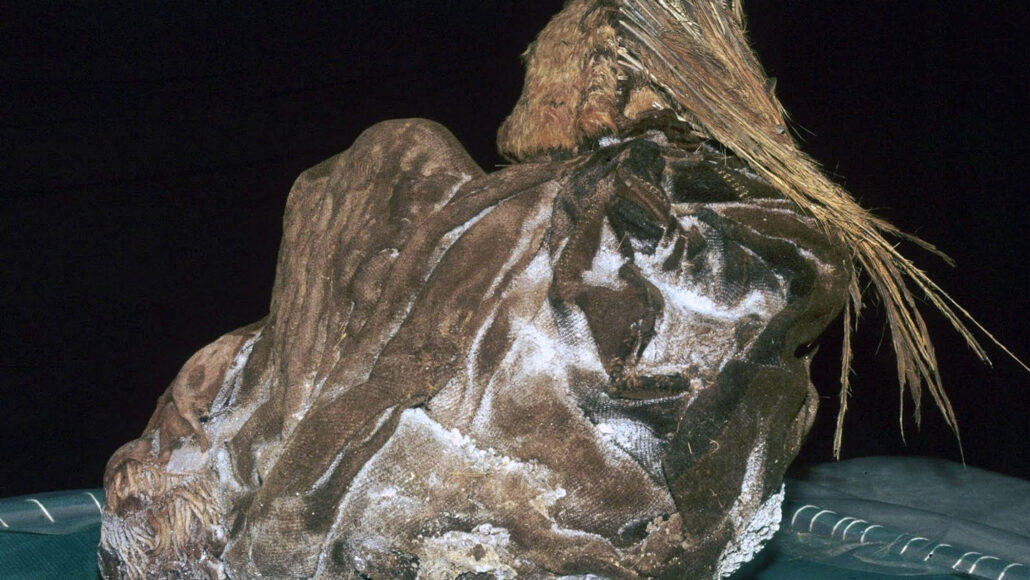These are the most popular Science News stories of 2022

Previously excavated bodies of two ritually sacrificed Inca children, including this girl still wearing a ceremonial headdress, have yielded chemical clues to a beverage that may have been used to calm them in the days or weeks before being killed. The discovery ranked among Science News' most-read stories of 2022.
Johan Reinhard
- More than 2 years ago
Science News drew over 13 million visitors to our website this year. Here’s a recap of the most-read news stories and long reads of 2022.
Top news stories
1. A special brew may have calmed Inca children headed for sacrifice
The mummified remains of two Inca children ritually sacrificed more than 500 years ago contain chemical clues to their final days and weeks. On the journey to the Peruvian mountain where they were sacrificed, the children may have chewed coca leaves and drunk a beverage with antidepressant-like ingredients to soothe their nerves (SN: 6/4/22, p. 10).
2. A ‘mystery monkey’ in Borneo may be a rare hybrid. That has scientists worried
An unusual monkey first spotted six years ago appears to be a cross between a female silvered leaf monkey (Trachypithecus cristatus) and a male proboscis monkey (Nasalis larvatus). The possible cross-genera pairing has scientists worried because such matings are usually a sign that species are facing ecological pressures (SN: 6/18/22, p. 11).
3. What experts told me to do after my positive COVID-19 at-home test
After Science News intern Anna Gibbs came down with COVID-19, she turned to health experts to figure out how to report her case to public health officials and how long she needed to isolate (SN Online: 4/22/22).
4. All of the bases in DNA and RNA have now been found in meteorites
Here’s more evidence that life’s precursors could have come from space. All five of the nucleobases that store information in DNA and RNA have been discovered in meteorites. This year, scientists reported detecting cytosine and thymine in fallen space rocks, completing the list (SN: 6/4/22, p. 7).
5. Humans may not be able to handle as much heat as scientists thought
For years, it was thought the human body can tolerate heat up to a “wet bulb” temperature — a measure combining humidity and air temperature — of 35° Celsius (95° Fahrenheit). But experiments hint that the threshold may be several degrees lower (SN: 8/27/22, p. 6).
Science News joins TikTok
TikTok became one more way we tell stories, as we premiered our first TikTok video — a tribute to the “bambootula” tarantula. Find out what makes this spider so peculiar and discover other amazing science tidbits @sciencenewsofficial.
@sciencenewsofficial This is the only known tarantula to call bamboo home. #spiders #tarantula #science #biology #sciencetok
♬ original sound – sciencenewsofficial
Top feature stories
1. Tardigrades could teach us how to handle the rigors of space travel
Tardigrades can withstand punishing levels of radiation, the freezing cold and the vacuum of outer space. Researchers are learning the death-defying tricks of these hardy microscopic animals to better prepare astronauts for long-term voyages (SN: 7/16/22 & 7/30/22, p. 30).
2. Muons spill secrets about Earth’s hidden structures
Just like doctors use X-rays to see inside the human body, scientists are using muons, a type of subatomic particle, to peer inside Egyptian pyramids, volcanoes and other hard to penetrate structures (SN: 4/23/22, p. 22).
3. Multiple sclerosis has a common viral culprit, opening doors to new approaches
Evidence is mounting that Epstein-Barr virus somehow instigates multiple sclerosis. Understanding the link between the virus and MS may lead to better treatments for the neurological disorder. Vaccines against the virus may even prevent MS altogether (SN: 8/13/22, p. 14).
4. The discovery of the Kuiper Belt revamped our view of the solar system
In 1992, two astronomers discovered a doughnut-shaped region far beyond Neptune, dubbed the Kuiper Belt, that’s home to a swarm of frozen objects left over from the solar system’s formation. By studying these far-off objects over the last 30 years, scientists have gained new insights into how planets form (SN: 8/27/22, p. 22).
5. Clovis hunters’ reputation as mammoth killers takes a hit
Ancient Americans may have been big-game scavengers rather than big-game hunters. Some recent analyses suggest that Clovis stone points were more likely tools for butchering large carcasses than weapons for taking down mammoths and other large animals (SN: 1/15/22, p. 22).